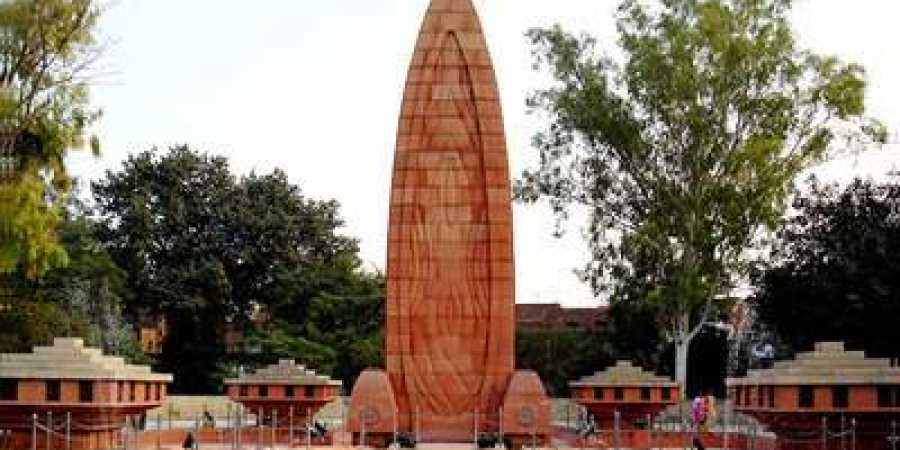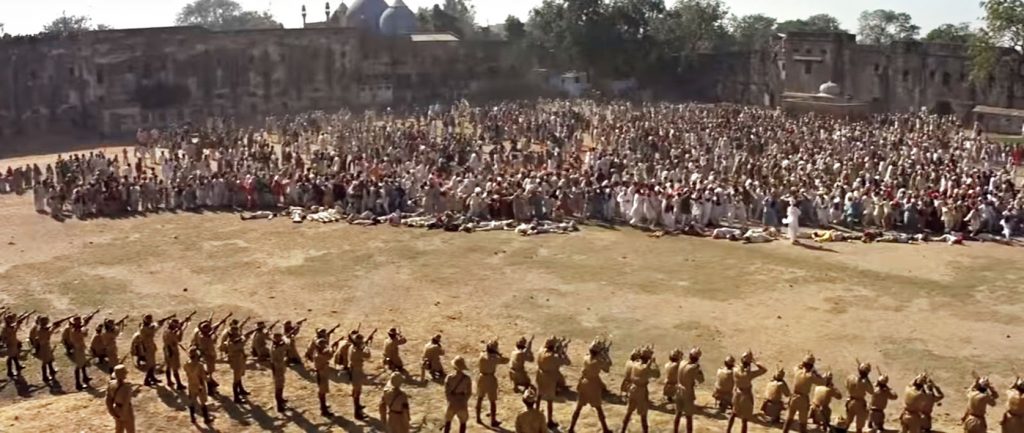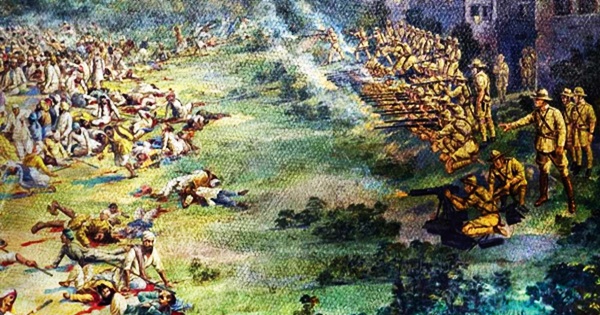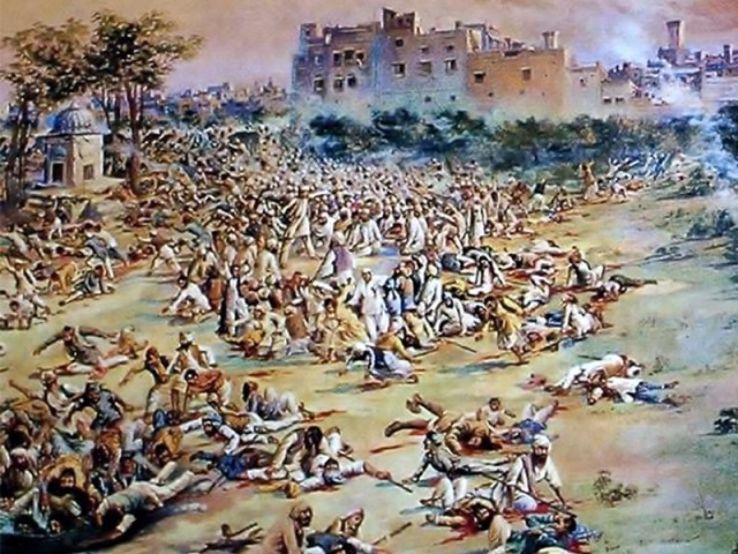Jallianwala Bagh in Amritsar is a public garden that stands as a moving reminder of one of the most tragic chapters in India’s freedom movement. This garden is where hundreds of unarmed Indian men, women, and children were massacred heartlessly by the British Army in 1919. Today, Jallianwala Bagh is a memorial of national importance and also one of the most visited historical places in Amritsar.
Planning a trip to Amritsar? When you step out of your hotels in Amritsar and explore this heritage city, make sure to visit this famous memorial. Here is everything you should know, from history, timings, and entry details to other lesser-known facts about Jallianwala Bagh.
Jallianwala Bagh Information:
| Location | Golden Temple Road |
| Timings | 6:30 am to 7:30 pm; every day |
| Entry Fee | Free |
| Status | Memorial managed by the Jallianwala Bagh National Memorial Trust |
| Memorial Established in | 1951 |
| Area | 6.5 acres |
Jallianwala Bagh: History
During the reign of the Sikh Empire, Jallianwala Bagh was the private property of the family of Himmat Singh, one of the Five Beloved Ones in Sikhism. It is believed that it was once a garden house or a garden. However, in 1919, Jallianwala Bagh was nothing more than an uneven land surrounded by a 10-feet-high wall with only one exit.
On 13th April 1919, General Dyer of the British Army issued an order banning all public meetings involving four or more people in Amritsar. However, since it was the Baisakhi Day, the main religious festival of the Sikhs, many people had gathered at Jallianwala Bagh to celebrate the occasion. This gathering included men, women, and children as well. When Dyer learned of this assembly, he went there with his soldiers, blocked the main exit, and ordered his soldiers to fire at the unarmed crowd. The firing continued for almost 10 minutes until the bullet supply of the soldiers was almost exhausted.
Apart from the huge number of people who were killed by the bullets, several died after being crushed in the stampede that took place due to the firing. Many of the helpless people jumped into the 20 feet deep well inside the garden to escape the bullets and died there. British official sources declared that 379 people had died and around 1200 were injured. The Indian National Congress estimated that 1000 had died while more than 1500 were wounded.
This incident, which is still considered as one of the most tragic incidents in India’s history, came to be known as the Jallianwala Bagh Massacre or the Amritsar Massacre. The Government of India established a memorial inside the garden in 1951 to honor the martyrs of that fateful day.

Jallianwala Bagh Architecture
The garden now houses the Flame of Liberty memorial, which was inaugurated by the first President of India, Dr. Rajendra Prasad, on 13 April 1961. The memorial comprises of a 30-feet-high central pylon that stands in the middle of a shallow tank. Built out of red sandstone, this structure has been made from 300 slabs, with the Ashok Chakra etched on them. Four stone lanterns stand at the four corners of the tank. There’s an inscription on all four sides of the pylon that reads as, “In memory of martyrs, 13 April 1919”.
Jallianwala Bagh Centenary Commemoration Committee (JBCCC)
The JBCCC was set up to commemorate the 100th anniversary, hold a debate, host an event at the House of Lords and to organise exhibitions in London, Birmingham and Manchester. The goal is to raise awareness of this unfortunate event and to request an apology from the British government. The members of the committee are Mr Balbir Singh Kakar (Chair), Mr Virendra Sharma MP, Ambassador Navtej Sarna and myself. The patrons are Dr Rajinder Singh Chada (Patron-in-Chief), Mr Manjit Singh GK, Padma Shri Vikramgit Singh Sahney & Mr Surinder Singh Manak.

House of Lords Debate
I initiated a debate at the House of Lords (HoL) on Tuesday 19th February 2019. In the opening speech I talked about my relationship with Jallianwala Bagh. I have visited this park many times and I have seen the bullet holes in the walls. I have also seen the well from where all the bodies were extracted. I ended my speech with an appeal for an apology from the UK government.
To put this tragedy into context these are the words of Sir Winston Churchill describing the actions that took place that day:
“That is an episode which appears to me to be without precedent or parallel in the modern history of the British Empire. It is an event of an entirely different order from any of those tragical occurrences which take place when troops are brought into collision with the civil population. It is an extraordinary event, a monstrous event, an event which stands in singular and sinister isolation” (Official Report, Commons, 8/7/1920; col. 1707.)
For more information regarding the debate you can read our press release or the House of Lords transcript in full.
Jallianwala Bagh: Today
This tragic incident has turned Jallianwala Bagh into a national pilgrimage site and one of the top places to visit in Amritsar. The garden is now under the maintenance of the Jallianwala Bagh National Memorial Trust. Though the place has been transformed into a beautiful park, several structures related to the massacre still exist inside the walled compound.

Things to See in the Jallianwala Bagh Compound
The Jallianwala Bagh memorial has several structures that recount the horror of the massacre, including:
- A section of a wall that still bears the bullet marks
- The Martyr’s Well, the well into which people had jumped on that day to escape the firing
- A semi-circular veranda that marks the spot from where the soldiers had fired at the people
- Flame of Liberty, the memorial built in honor of the martyrs
- Martyrs’ Gallery and a museum

Lesser Known Facts about Jallianwala Bagh
- Apart from the soldiers, General Dyer had brought with him two machine guns in two armored cars for the shootings. But they could not be brought inside the garden due to the narrow entrance, and hence were left outside.
- Around 120 dead bodies were pulled out of the well in the garden after that incident.
- This incident moved Rabindranath Tagore so much that the poet renounced his Knighthood.
- Mahatma Gandhi protested by giving back his Kaiser-i-Hind medal, which he received for his work during Boer War.


Comments are closed.